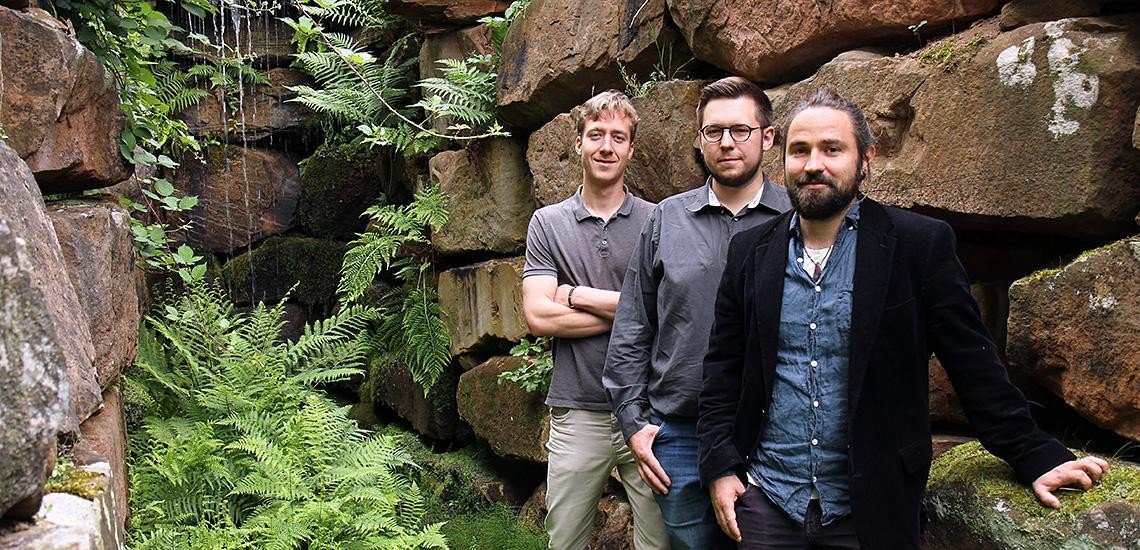
With the motto “We green the World” Artifical Ecosystems wants to make our cities greener. What’s new about the concept: Founders Dr. Tobias Graf, biologist and plant ecologist, civil engineer Martin Hamp and IT specialist Björn Stichler are combining natural plant growth with artificial intelligence. By integrating e.g. mosses into buildings, the team wants to imitate the habitat of plants and at the same time monitor them using technology. The advantages of the overall concept for the AI greening of smart cities range from environmental cooling and air purification, to heat and noise insulation, to biodiversity and the promotion of recreational opportunities in our cities. The start-up is still in the preparatory phase. But thanks to the extremely positive response – the three founders recently won the Rhineland-Palatinate ideas competition – it has excellent chances of establishing itself in the long term.

Dr. Tobias Graf, founder and CEO of Artificial Ecosystems in an interview about his idea, the foundation and his visions
How did you come up with the idea for Artificial Ecosystems?
The idea came up during my dissertation. At that time I was concerned with the diversity and conditions of moss growth. In conversation with a friend of ours, an architect, we philosophized about the special design possibilities that moss surfaces could offer for the construction industry. We didn’t see any possibilities at that point as to how the mosses could be applied to surfaces.
A few years later – I was writing about computer-aided irrigation concepts for plants for my doctoral thesis – I picked up the idea again. Right away it became clear that it was not necessary to place the moss on the surface, but simply to provide it with the right surfaces. Because –
“…if you consciously take a look around the city, mosses grow in various places all by themselves, precisely because the ecological conditions are right. This gave birth to the idea of creating these exact ecological conditions artificially. The BryoSYSTEM.”
What are the special application areas of your product range?
Theoretically, the BryoSYSTEM can be implemented in all kinds of areas where rainwater and an internet connection are available. At the moment, however, we are concentrating mainly on landscaping building facades. We are developing the BryoSYSTEM as a rear-ventilated facade for this purpose.

Does something similar already exist or what is so special about your product?
There are indeed a number of moss wall concepts, but with these, mature mosses are applied to the surface. The challenge then lies in keeping these mosses alive, which is difficult due to microclimatic fluctuations.
We work in such a way that our moss patches develop naturally by themselves and therefore are able to adapt to the microclimate at the location right from the start.
What was the biggest hurdle you had to overcome in the beginning?
There were several of them … Initially it was a difficult step to convince people of this not so conventional idea. Be it partners, supporters or donors. It was consequently difficult to obtain funding for this very complex and interdisciplinary field. We were then very much helped by the Exist-Gründer grant from the Federal Ministry of Economics. We have received this support since the beginning of March. As a result, we can fully concentrate on establishing our company and on product development.
Was there a moment when you wanted to give up?
Sometimes there are occasions when you feel overwhelmed. It’s not just a difficult, highly complex terrain where we are active with respect to our product development, it is especially building up a company that poses particular challenges again and again. Yet giving up has never been an option before.
And vice versa: What was the greatest moment for you when it came to founding Artificial Ecosystems, what made you particularly proud?
Not long ago we received some wonderful recognition from the state of Rheinland-Pfalz for our recently formed company. This was when we won first place in the ideas competition. That was a tremendous motivation for us to stay on the right track and to convince people of our good idea who are not at all familiar with the issue.
What can we look forward to in the next few years, in other words: What can we expect from you in the coming years?
I hope we will soon be able to do what we have already been able to show on a smaller scale, namely to enable moss to grow on our surfaces and integrate them into major construction projects. In the future, big cities should have more livable and greener squares thanks to our systems.

What drives you every morning?
Being able to realize your own idea, which is not only an exciting project for us, but at the same time offers enormous added value to society.
What is your vision: Where do you see your company in 5 years and what is your ultimate goal?
Our vision is that we are nowhere close to being done with moss.
We dream of small, self-contained ecosystems in which botany and zoology complement each other, bringing nature back into the city and integrating added value into smart city concepts.
“Who knows, maybe someday colorful butterflies will buzz on building facades which have all kinds of colorful plants.”

